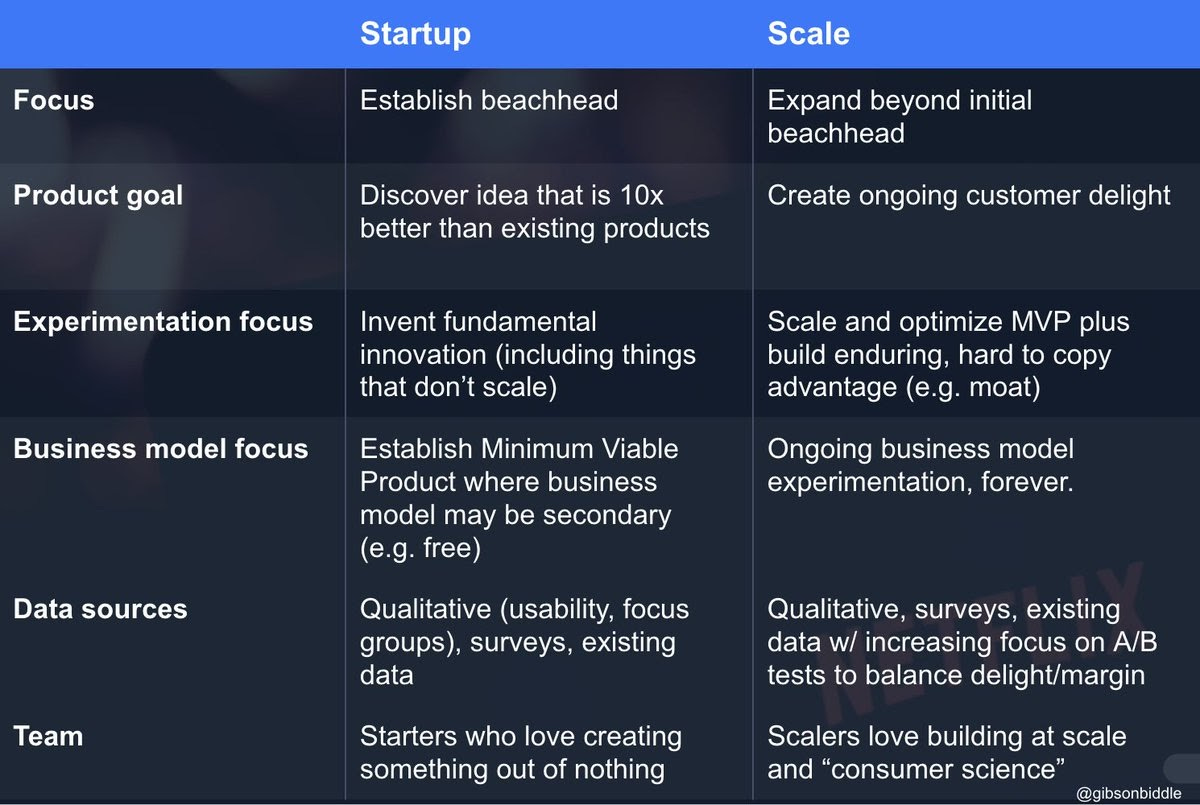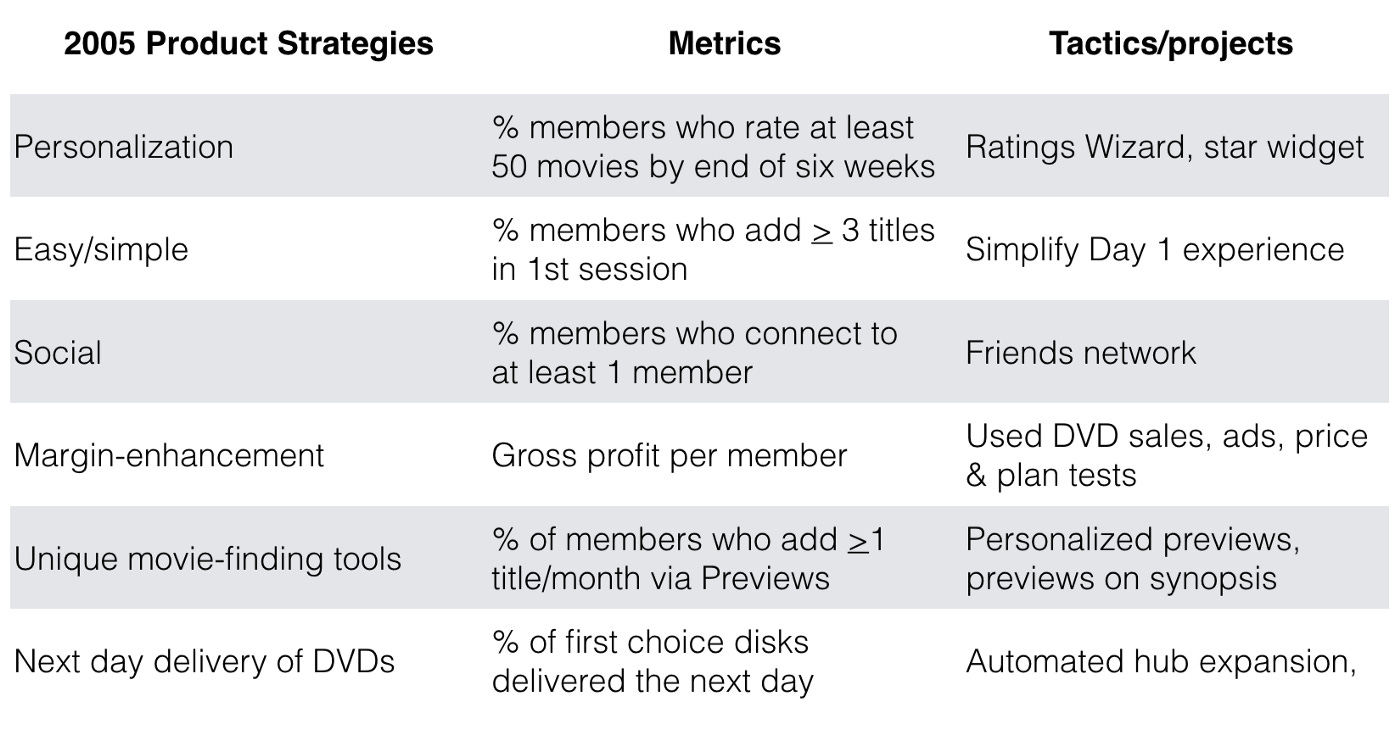What was the difference for you coming from a scaleup like Netflix to a startup like Chegg when it came to implementing the product strategy?
Answer: The key difference between just-born startups and scale-ups: focus on delight, then layer in hard-to-copy advantage and margin later.
Hi:
Both Netflix and Chegg felt about the same when I joined. Each was a startup with a proof-of-concept that was ready to scale.
But I have plenty of early-stage startup experience. At a high-level, a just-born startup's job is to discover what will delight a tiny subset of customers. Focus on building hard-to-copy advantage and margin later. Fast-growing scale-ups have the resources to pursue multiple hypotheses in parallel and, as they grow, can build advantage through brand, network effects, unique technologies, and economies of scale. And for scale-ups, the business model experimentation is forever.
Here’s a quick summary, contrasting startups and scale-ups:
On the bottom rows, I note the different data sources available at each stage. I also acknowledge the types of product leaders that excel at each stage. I think of early-stage startup peeps as “starters” — they love to build something out of nothing — while “builders” appreciate having more resources available to them. (I view myself as a builder more than a starter.)
Instagram’s search for delight
As an example of an early-stage startup’s approach to product strategy, think about Instagram. Its initial effort -- Burbn-- a mobile check-in app -- was dead on arrival. But through fast-paced experimentation, Kevin Systrom and a tiny team of “starters” managed to create a delightful experience that was ten times better than any other tool by enabling consumers to take a photo, crop it, enhance it, then share it— all in less than a minute.
Instagram was easy to copy, but the product evolved to include a large community of celebrities and digerati, establishing a hard to copy network effect. Instagram didn’t experiment with its business model until a few years after Facebook acquired them, and at this point, advertising was an obvious solution.
The Netflix Scale-up: Exploring multiple hypotheses to DHM
For me, Netflix and Chegg were scale-ups. When I arrived at Netflix in 2005, I asked the CEO, Reed Hastings, if there was a product strategy. His response, “We need to improve retention by Delighting customers in Hard to copy, Margin-enhancing ways.” I told him I would outline our hypotheses, the metrics we would use to validate them, and tactics against each of these hypotheses.
Our product strategy looked something like this:
Of the product strategies above, two failed (social, movie-finding tools). In 2007 we launched streaming and built a hard-to-copy advantage through our brand, a network effect (a network of TV-connected devices), personalization technology, and a growing economy of scale. Unlike early startups, we could afford to invest in multiple hypotheses at the same time.
(Click here to read a modern-day Netflix Product Strategy case study.)
The Chegg Scale-Up: What’s Next?
When I arrived at Chegg, it felt similar to Netflix. We had a solid proof-of-concept with textbook rentals, but the CEO, Dan Rosensweig, wanted to know what was next.
The initial hypothesis, e-textbooks, failed, so we quickly moved on to other theories to build a high margin digital service. Here was Chegg’s rough product strategy, circa 2010:
The messy and dirty part at Chegg: we bought six startups, and four failed. But one of these successes, Cramster, answered the “What’s next?” question. Cramster became the foundation for “Chegg Study,” a monthly homework help subscription that represents half of Chegg’s $600 million business today.
(Click here to read a Chegg product strategy case study.)
Early startups: Find your “delighter,” then iterate from there
If you find yourself at a just-born startup, iterate quickly to find that one thing that delights a tiny subset of customers. Once you know what that initial “delighter” is, you can begin to scale to a broader set of customers.
At this point, you’ll have more resources. Now you can execute multiple product strategies in parallel to answer the question, “How will our product delight customers in hard-to-copy, margin-enhancing ways.”
I hope you found this answer helpful.
Best,
Gib
PS. Click here to give feedback on this essay. (It only takes one minute.)
PPS. Click here to ask and upvote questions. This question had 20 upvotes:






